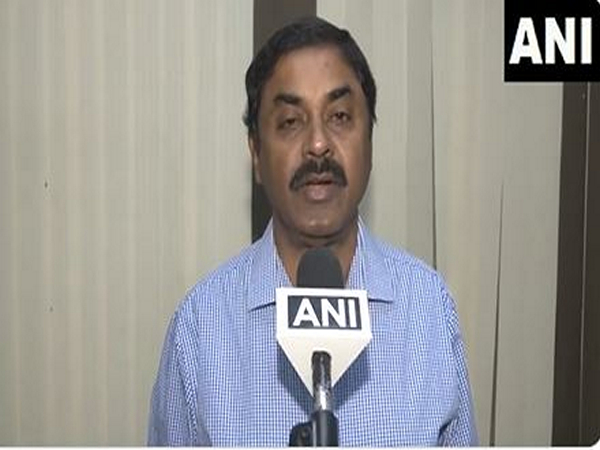Ex-DRDO Chief Reveals Indigenous Tech That Shaped 'Op Sindoor'

Hyderabad (Telangana) [India] May 11 (ANI): The recent remarks made by G Satheesh Reddy, Chairman of the Defence Research and Development Organisation (DRDO), shed light on the significant strides India has made in achieving self-sufficiency in defence technology, particularly through Operation Sindoor. This operation not only showcased India's growing capabilities in indigenous technology but also highlighted a strategic shift towards Atmanirbhar (self-reliant) warfare methodologies.
The importance of local development in defence technology cannot be overstated. The successful deployment of anti-drone systems, developed collaboratively by DRDO and the private sector, played a pivotal role in countering the extensive use of drones during the conflict. These systems, designed to neutralise drone threats, exemplified the effectiveness of homegrown innovations in real-world scenarios. For instance, during the operation, the capability of these systems to swiftly identify and neutralise incoming threats demonstrated not just technological prowess but also operational readiness.
Reddy's assertion that "a multitude of indigenous technologies played crucial roles in this conflict" reflects a broader narrative of national pride and resilience. The emphasis on Atmanirbhar-style warfare signifies a departure from reliance on foreign technologies, fostering a sense of strategic independence. This transition is not merely about technological advancement but also about cultivating a robust defence ecosystem that can respond effectively to emerging threats.
A notable example of this indigenous development is the BrahMos supersonic cruise missile, which has garnered international acclaim for its effectiveness, precision, and reliability. The comprehensive training provided to military personnel in its deployment underscores the commitment to operational excellence. The missile’s performance during combat operations has been a testament to the rigorous testing and development processes it underwent. Reddy's comments regarding the establishment of a BrahMos missile factory in Lucknow, which is set to produce between 100 to 150 missiles annually, further exemplify India's dedication to bolstering its military capabilities. This facility, part of the Defence Industrial Corridor project, not only enhances India's defensive strength but also significantly reduces reliance on foreign acquisitions.
The strategic implications of such advancements are profound. By fostering local manufacturing and development, India is not only enhancing its military capabilities but also creating a sustainable economic model that supports job creation and technological innovation. The establishment of the BrahMos facility is a clear indication of the government's commitment to investing in indigenous defence production, which is crucial for maintaining national security.
Air Marshal AK Bharti's statements regarding Operation Sindoor further illuminate the operation's strategic objectives. The operation successfully dismantled terrorist training sites, achieving its goals with precision. Bharti's emphasis on the operation's focus on specific targets rather than indiscriminate casualties reflects a sophisticated understanding of modern warfare, where the aim is to neutralise threats while minimising collateral damage. This approach aligns with contemporary military ethics and highlights the professionalism of the Indian Armed Forces.
The Air Marshal's assertion that the operation was designed to strike at specific targets rather than tally body counts underscores a strategic shift towards targeted operations. This reflects a nuanced understanding of modern conflict, where the objective is not merely to inflict damage but to achieve strategic outcomes. The Indian Armed Forces' successful execution of Operation Sindoor, with all pilots returning unharmed, is a testament to their training, discipline, and operational effectiveness.
The initiation of Operation Sindoor during the predawn hours of May 7 was a calculated response to the terrorist incident in Pahalgam on April 22, which resulted in the tragic loss of 26 civilians, including one from Nepal. This context underscores the urgency and necessity of the operation, highlighting India's resolve to protect its citizens and maintain national security. The operation's focus on nine terrorist facilities within Pakistan and Pakistani-controlled territories demonstrates a clear strategic intent to dismantle the infrastructure supporting terrorism.
Furthermore, the operation's success in defending India's airspace against intruders, including the downing of multiple Pakistani aircraft, illustrates the effectiveness of India's air defence capabilities. The assertion that "their aircraft were barred from crossing into our borders" signifies not only a tactical victory but also a broader message of deterrence to potential adversaries.
As India continues to navigate the complexities of regional security dynamics, the lessons learned from Operation Sindoor will undoubtedly inform future military strategies. The emphasis on indigenous technology, strategic independence, and targeted operations will play a crucial role in shaping India's defence posture in the coming years.
In conclusion, the developments surrounding Operation Sindoor, as articulated by G Satheesh Reddy and Air Marshal AK Bharti, underscore a transformative period in India's defence landscape. The focus on self-reliance through indigenous technology, highlighted by the successful deployment of anti-drone systems and the BrahMos missile programme, marks a significant shift in India's approach to national security. As the nation continues to strengthen its military capabilities, the emphasis on strategic independence will not only enhance its defence readiness but also contribute to regional stability. The operational success of the Indian Armed Forces in dismantling terrorist infrastructure reaffirms India's commitment to safeguarding its sovereignty and protecting its citizens, setting a precedent for future military engagements.
Posting Komentar untuk "Ex-DRDO Chief Reveals Indigenous Tech That Shaped 'Op Sindoor'"